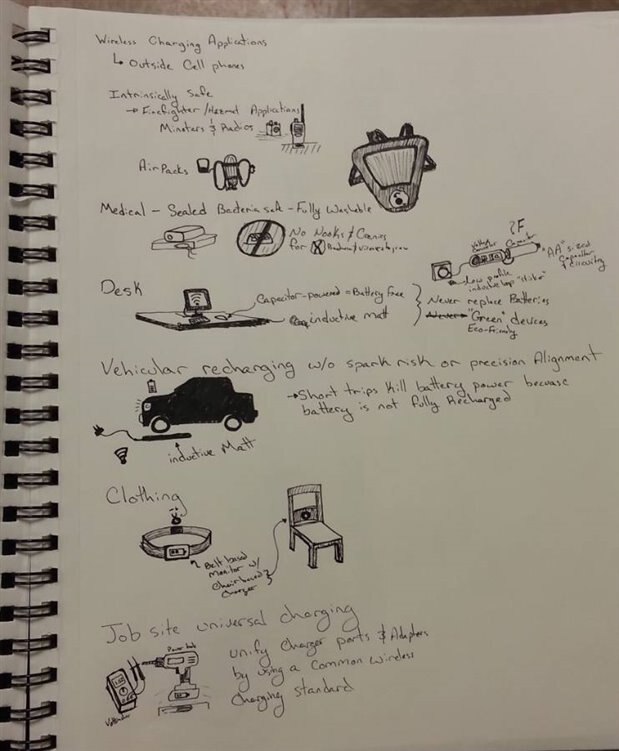Hi everyone,
My name is Alex Marconnet and i am one of the very lucky Element14 members who's idea was selected for this road-test/competition. I am very grateful to Element14, Texas Instruments and Würth Elektronik for providing me with this opportunity.
I have not yet received the unit, but i am looking forward to the competition. I thought that i would share part of my application:
"
Hello,
My name is Alex Marconnet. I know you have many applications to consider, but i hope that you will take a look at my attached sketches and consider my application as i am very eager to partake in this road test.
Wireless charging technology is something that i have been interested in for some time. I was so eager to implement it into my own life that i hacked a palm-pre "touchstone" charger into my Samsung phone because Samsung took too long to release the feature. Although i studied as a Mechanical engineer during my university days i have always had a strong interest in and pursuance of Electrical engineering.
Whenever i look at the current applications for wireless charging technology, and it seems that the majority of applications are very highly specialized (basically phone charging). When i started brainstorming i kept coming up with more highly specialized applications (i.e. Trickle charging car batteries, and firefighting apparatus). But then it struck me that many devices we use daily could be improved by a wireless upgrade. In a home there are dozens of devices that use batteries for power but have very low power requirements. One example i illustrated (Wireless-charged mouse) is the desktop mouse which uses only coulombs of power per hour of active use. By replacing the batteries in such a device with a inductively charged capacitor, we could eliminate the consumption of batteries by these devices. charging for a matter of seconds could power such a device for hours. Unlike re-chargeable batteries, a capacitor will never "wear out"
I would propose a system that would bring Qi chargers into every room of the house. Place a aesthetically pleasing charger on a coffee table and replace the TV's remote with this system. Enjoying a movie? Toss your phone on the same pad to charge it.
For this road test i would like to work on a more universal application of the technology. I have done some [very] rough calculations with off-the-shelf components and i believe it would be very possible to maintain the form factor of a pair of AA batteries. Please look at the attached "wireless capacitor - battery replacement concept.jpg".
Thank you for your consideration.
Best regards,
Alex Marconnet
"
below is a snapshot of my initial concept...I envisioned a "stick on" charging coil, a pair of off-the-shelf capacitors, and a small charging / voltage converter...I know that this is a lot to pack into the space, but I am hoping that a prototype comes close. I will admit my vision stems from the form factor of the Palm pre charging coil and circuit which I hacked into my Galaxy S3 phone. I expect the coil in this kit to be more substantial because it is capable of coupling more energy than the palm pre "touchstone". I was planning on breadboarding the circuit and getting it to run, then figuring out the specifics of cramming it into that "AA" form-factor, I will probably end up 3D-Pringing the final battery-imitation enclosure. I will do my best to fit it all in! I welcome any advice that the community has to offer.
Here is a shot of my sketchbook with some of my original brainstorming ideas...



Top Comments
-

vsluiter
-
Cancel
-
Vote Up
+2
Vote Down
-
-
Sign in to reply
-
More
-
Cancel
-

aemarconnet
in reply to vsluiter
-
Cancel
-
Vote Up
+3
Vote Down
-
-
Sign in to reply
-
More
-
Cancel
Comment-

aemarconnet
in reply to vsluiter
-
Cancel
-
Vote Up
+3
Vote Down
-
-
Sign in to reply
-
More
-
Cancel
Children